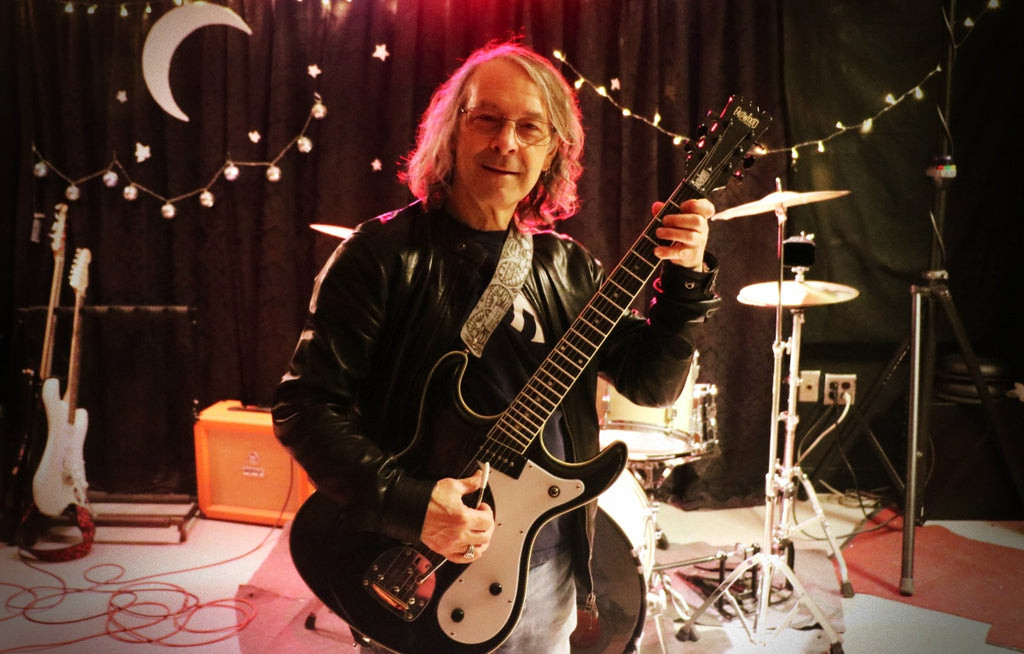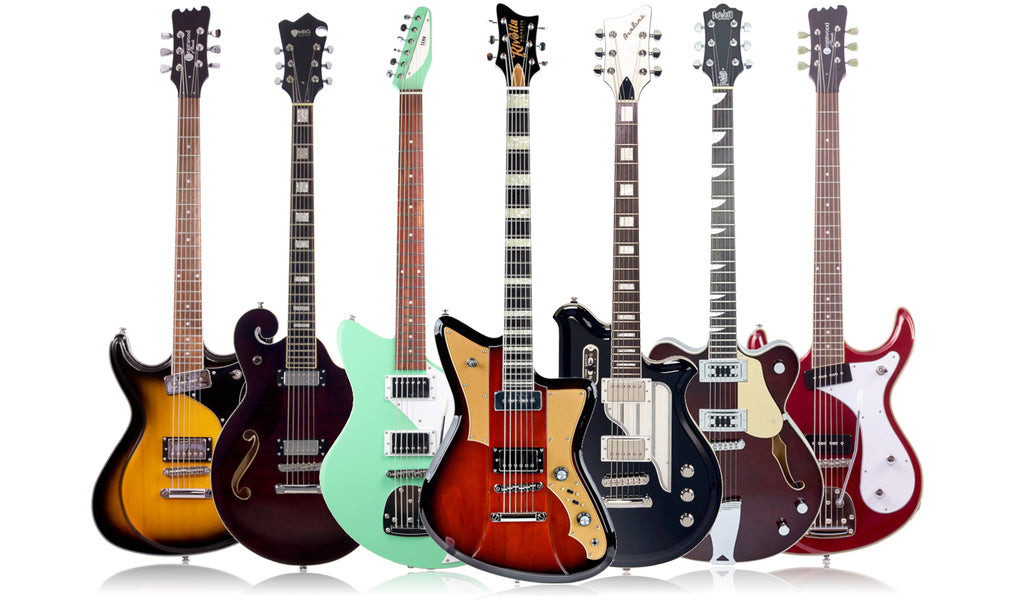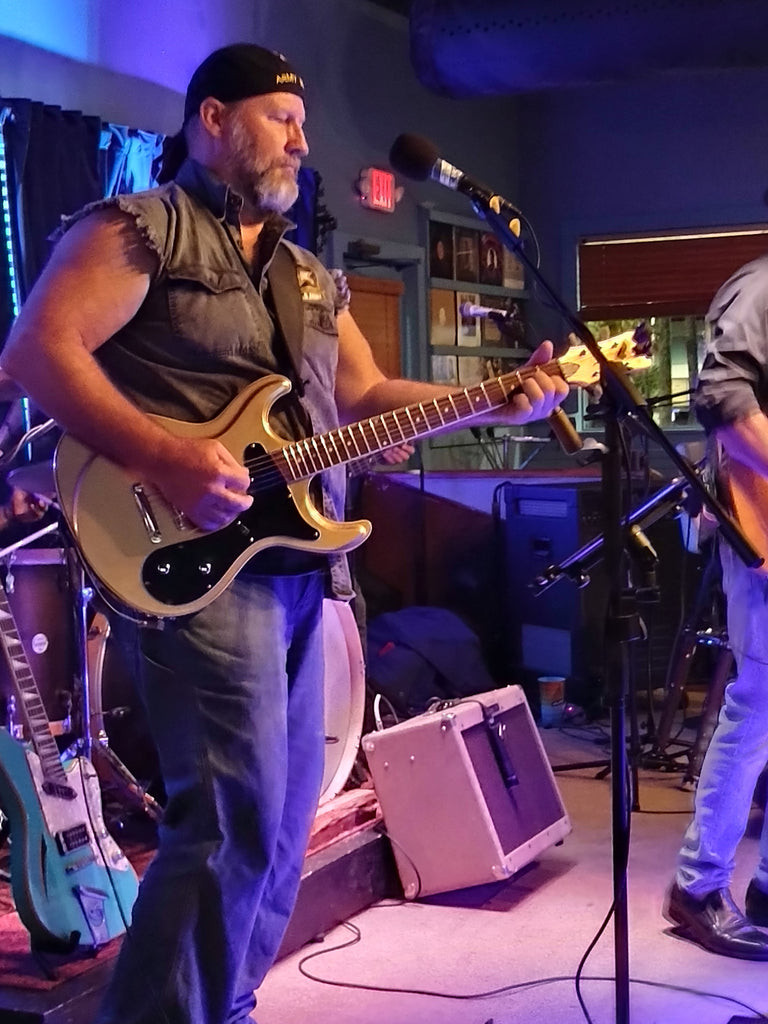The baritone guitar, a unique instrument in the guitar family, offers a rich, resonant sound that has captivated musicians across genres for decades. While it shares similarities with the standard guitar, its longer scale length and lower tuning unlock a sonic landscape all its own. Eastwood Guitars, with a long history of crafting exceptional baritone guitars, presents this guide to delve into the world of Baritone Guitar Tuning, exploring its nuances and potential.
From its emergence in rockabilly and surf rock in the 1950s and 60s to its contemporary presence in genres ranging from metal to funk, the baritone guitar continues to inspire musicians seeking to expand their tonal palette. Eastwood Guitars offers a diverse range of baritone electric guitars, each designed to deliver exceptional sound and visual appeal, empowering players to forge their unique sonic identity. The baritone guitar is no longer relegated to niche genres; it’s a versatile tool for modern musicians across the spectrum.
Understanding Baritone Guitar Tuning
So, what exactly defines a baritone guitar and its distinctive tuning? At its core, a baritone guitar is a six-string guitar with a longer scale length than a standard guitar. This extended scale, typically ranging from 27 to 30 inches, is crucial for accommodating lower tunings. Standard baritone guitar tuning is B to B, which is a perfect fourth lower than standard guitar tuning (E to E). This means that when you play familiar chord shapes and scales on a baritone guitar, you are accessing a lower register, creating a deeper and more resonant sound.
Image: Sidejack Baritone DLX showcasing its design for optimal baritone guitar tuning.
The heavier gauge strings used on baritone guitars are essential for achieving stable and clear tones at these lower pitches. Trying to tune a standard guitar down to B to B with regular strings would result in floppy, indistinct notes. The increased string tension provided by heavier gauges on a longer scale ensures that the baritone guitar tuning is both resonant and articulate.
Why Explore Baritone Guitar Tuning?
For guitarists seeking fresh creative avenues, the baritone guitar tuning offers a world of possibilities. If you find yourself in a musical rut, playing the same licks and yearning for new sonic textures, a baritone guitar can be the ideal instrument to reignite your inspiration. Regardless of your preferred genre, the baritone’s lower register can unlock new melodic ideas and harmonic voicings. The unique tuning naturally encourages exploration beyond familiar patterns, prompting your musical brain to think in new and exciting ways.
A Look at the History of Baritone Guitar Tuning
The baritone guitar’s origins can be traced back over a century to German acoustic guitar innovations. However, it was in the burgeoning electric guitar market of the 1950s and 60s that the baritone began to find its popular voice. Manufacturers like Fender and Danelectro adapted the instrument for electric amplification, and pioneers like Duane Eddy embraced its distinctive sound. Eddy, a rockabilly icon, was instrumental in popularizing the baritone, utilizing its deeper tones to create his signature twangy sound. This era cemented the baritone guitar tuning in the soundscape of surf rock, country music with artists like Glen Campbell, and the iconic spaghetti western soundtracks of Ennio Morricone.
Image: A vintage ’60s Guyatone Baritone Guitar, representing the early era of baritone guitar tuning exploration.
While the 60s defined an era for the instrument, the baritone guitar experienced a resurgence in the 1990s, particularly within the hard rock scene. Its haunting tones were notably featured in the theme music for the television series Twin Peaks, further expanding its reach. Today, the influence of baritone guitar tuning is pervasive across genres. From the funk fusion of The Fearless Flyers to the heavy sounds of Metallica and Cannibal Corpse, the baritone guitar’s versatility is undeniable. Eastwood Guitars continues this legacy, offering a diverse selection of baritone electric guitars that cater to a wide range of musical styles and player preferences.
Iconic Baritone Guitar Players and Tuning
The past two decades have witnessed a significant surge in the popularity and application of baritone guitars. Musicians from diverse stylistic backgrounds are increasingly drawn to the baritone, seeking to enrich their sonic palette and explore territories beyond conventional instrumentation. In the early days, Nashville legends like Duane Eddy and Glen Campbell, along with the Fender Bass VI, were pivotal in establishing the baritone’s presence. Brian Wilson of the Beach Boys, a visionary songwriter and producer, frequently utilized baritone guitar tuning in his arrangements and songwriting, discovering unique tonal ranges previously inaccessible to guitarists.
In more recent times, the baritone guitar has become a staple in heavy music, with artists like James Hetfield of Metallica, Brian ‘Head’ Welch of Korn, John Petrucci of Dream Theater, and Pat O’Brian of Cannibal Corpse all incorporating its powerful low-end into their sound. Beyond metal, artists like Eddie Van Halen, Dave Matthews, and Robert Smith have also explored the baritone’s potential in their recordings. Jazz luminary Pat Metheny showcased the baritone’s softer side on his solo albums “One Quiet Night” (2003) and “What’s It All About” (2011). Ani DiFranco’s diverse catalog further exemplifies the baritone’s genre-bending capabilities within jazz and beyond.
Mark Lettieri of Snarky Puppy and The Fearless Flyers has been instrumental in the contemporary baritone revival. His 2019 solo album, “Deep: The Baritone Sessions,” is a testament to the instrument’s expressive range in funk and fusion. Lettieri’s prominent use of the baritone has inspired a new wave of funk and groove-oriented players to explore baritone guitar tuning.
Eastwood Guitars proudly counts numerous renowned musicians among its baritone players. Pat Smear of the Foo Fighters, Ian Mackaye of Minor Threat, and Albert Bouchard of Blue Oyster Cult are all known for their frequent use of the Eastwood Sidejack Baritone on stage and in the studio.
 Albert Bouchard – Eastwood Guitars
Albert Bouchard – Eastwood Guitars
Image: Albert Bouchard with his Eastwood Sidejack Baritone DLX, highlighting the instrument’s appeal to diverse musical styles and baritone guitar tuning preferences.
Finding Your Baritone Guitar
Eastwood Guitars stands as a leading manufacturer of baritone guitars, offering an extensive range of models to suit every player’s needs and preferences. With over 20 baritone models available in various colors and configurations as of Summer 2023, Eastwood provides options across its Rivolta, Classic, Sidejack, Airline, Jeff Senn, and MRG Studio series. Priced affordably between $600 and $1500 USD, Eastwood baritones deliver exceptional value and quality, shipped directly to your door.

The 20th Anniversary Sidejack Baritone LTD model became a top seller, demonstrating the surging interest in baritone guitars. Customer collaborations, like the custom single-pickup baritone developed with Steve Robbins of The $hareholders, further illustrate Eastwood’s commitment to meeting player-specific needs and pushing the boundaries of baritone guitar tuning and design.

Eastwood’s dedication to innovation extends to standard-tuned guitars as well, with the new Sidejack Standard series complementing their baritone offerings. Utilizing modern manufacturing and design, Eastwood guitars are built for performance and durability, ready for both studio and stage environments. The baritone guitar revolution is here – embrace the deeper tones, explore new sonic territories, and discover the unique voice that baritone guitar tuning can unlock in your music.
[
